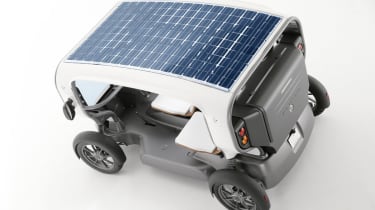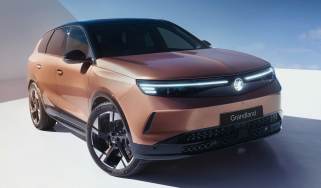Solar power car feature
A solar panel for your car? We discover that you can harness the sun’s energy to keep your motor’s battery topped up
How can you save money and the planet at the same time? Simple: with a solar panel for your car or garage.
These days, drivers can’t ignore their carbon footprint... Whether it’s at the fuel pumps with increased duty, the prospect of sliding scale congestion charges or when renewing your tax disc, we are all being encouraged to consume less. And one place where we can do our bit is in the workshop.
Just as there are solar panels for the roof of your home, you can buy smaller versions which are designed to work inside a car or garage. Unlike those on your house, they don’t directly replace all mains power; rather, they keep your battery topped up. And as modern cars are loaded with electrical kit, from alarms and immobilisers to keyless entry systems – all of which draw a constant current from the battery – this is essential.
For vehicles that aren’t driven very often, the conventional solution to a drain on the powerpack has been a trickle charger. But this uses electricity whenever it is connected. A solar panel does away with the need for mains power by converting enough daylight into a 12V charge to keep the car’s battery at full strength.
All you have to do is plug the solar panel into the cigar lighter socket, stick it on the top of your dashboard directly under the windscreen and you have an eco-friendly charge-free power source. And as it doesn’t need to be near a mains supply, a solar panel enables motorists to keep their cars ready to run just about anywhere.
But the key question is whether these systems really work. It’s hard to believe that a small unit the size of a few paperback books can supply enough grunt for a big car battery. However, solar panels are already used to convert light to electricity on boats and for active road signs.
These panels are known as photovoltaic or PV, and come in crystalline or amorphous forms. The former are more efficient, and are set apart by their distinctive blue appearance. They certainly deliver the power, but you should check that your car is suitable first. If buying a panel to use through the cigar lighter, remember that many modern cars cut the connection to the 12V socket when the ignition key is removed. If your vehicle is wired in this way, an ideal solution is a two-pin insulated connector – similar to those found on battery chargers – complete with a flying lead and crocodile clips.
Simply wire the socket to the car’s battery and change the plug on the panel. Most accessory stores sell suitable connectors and cable, and if you’re not confident about doing the job, an auto electrician will help you out for a reasonable price.
You could even store a solar torch in the glovebox, and power it alongside the panel. Ring’s £25 Cyba-Lite Solar uses a PV panel about the size of a mobile phone to light up to two LEDs, and should last for months once fully charged. We’ve tried this torch, and it’s remarkably effective.
But will solar panels definitely work with the variable nature of British weather? In the UK, we get an average of four hours’ usable light daily at the height of summer, and even in the middle of winter there’s still around an hour.
The trouble is, these figures assume a panel has an unobstructed view of the sky. Cars that feature steeply raked glass and windscreens that form part of the roof offer obvious advantages here. But most vehicle designs leave a panel in shadow for a proportion of the day, and this slashes the amount of usable light. Dirty or tinted glass will limit the output, too.
There are ways around these problems, though. Flexible weatherproof solar panels can be strapped on to a vehicle’s roof, which maximises available light. The beauty of this is that the lead can easily be routed under the bonnet to the battery.
If your car is stored in a garage, mounting the panel on the building’s roof and extending the wiring to a battery connector will yield the most successful results. And even if security worries mean that you’re restricted to using in-car panels, the wide selection of different power outputs available means you can make the most of what little usable light there is.
The right panel
Generally, most solar panel users find a five-watt unit will keep the average car’s battery topped up. Expect to pay around £70 for one of these. But if you want to be more certain of success, it’s possible to work out exactly what you’ll need:
* Measure your car’s battery use when parked.
* Multiply this figure (amps) to get a daily amp-per-hour consumption rate.
* Multiply this by 12 (volts) to convert into watt hours. Most cars consume between 5 and 30 watt hours a day.
* Make a worst-case guess of how much light your panel is likely to receive.
* Divide your car’s daily watt hours figure by the estimated light. This gives the panel’s required wattage. So, a 10-watt hour demand divided by 1.5 hours’ usable light would show that the panel needs to be at least 6.7 watts to keep up.
Contacts
Exide 0845 450 2400 www.exideuk.co.uk
Machine Mart (Panels & Charge Controllers) 0845 450 1800 www.machinemart.co.uk
Ring 0113 213 2000 www.ringautomotive.co.uk
Sealey (Accessory Panels) 01284 757500 www.sealey.co.uk
Select Solar (Panels, Controllers, & Sundries) 0845 0031353 www.selectsolar.co.uk



